Interesting releases from Australia’s Imprint
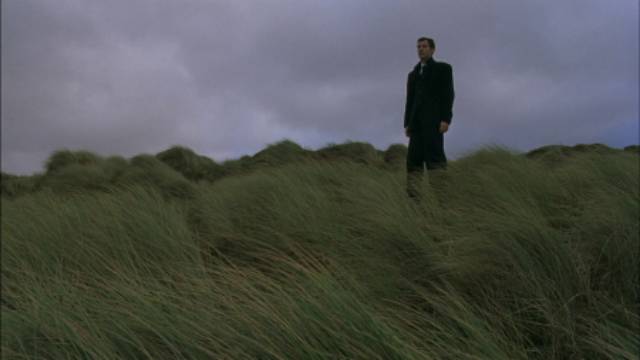
I mentioned the Australian label Imprint a couple of months ago after coming across a copy of their release of George Pal’s Conquest of Space (1955). That triggered a small on-line buying spree and I now have another half-dozen of their releases on hand. I’ve yet to watch Gillo Pontecorvo’s Quemada/Burn! (1969) – a two-disk set which includes the original Spanish version as well as the slightly shorter English-language release and features substantial extras, with a commentary (on the English version), interviews, a video essay and a documentary about Marlon Brando’s work in the ’60s – but the other five mark this as a label to watch. These releases also raise the interesting question of why an Australian company is putting out movies which have not received North American restorations on Blu-ray.
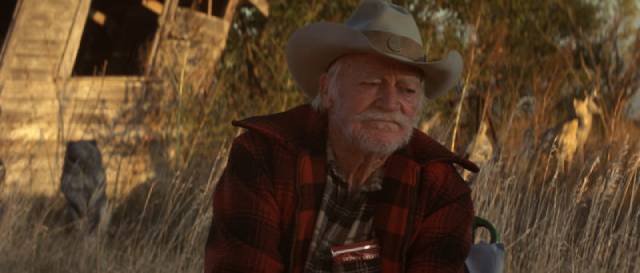
The Straight Story (David Lynch, 1999)
David Lynch’s The Straight Story (1999) appears on the surface to be something of an outlier in the filmmaker’s career. When it opened, the advertising seemed disorienting – what was the director whose most recent film had been the pitch black nightmare Lost Highway (1997) doing making a Disney-financed movie about an old guy driving a lawn tractor across Iowa? Not knowing what to expect, I went to see it more out of curiosity than real interest. And discovered one of the finest films Lynch had ever made and the one which, to my surprise, seems to reflect most clearly Lynch’s personality – the suggestion of openness and curiosity and, paradoxically, aw-shucks naivety which comes across in conversation with him.
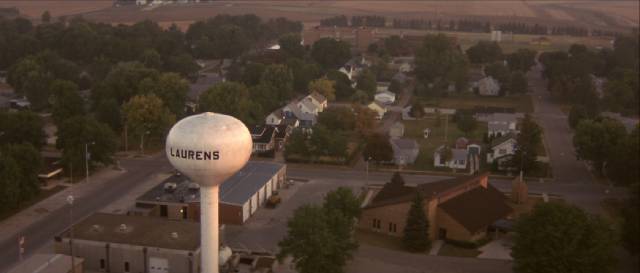
In this, the film throws an interesting light on all of his work. There are echoes of many of his films in The Straight Story, but they arrive without the “Lynchian” filter which transforms his films into the strange, distinctive otherworldly stories which have garnered him such a strong, passionate fan base – and, eventually, the admiration of critics who for years had been wary and distrustful of his particular artistry. Back at the end of the ’90s, and even today, some of those fans have been puzzled and even dismissive of the film, seeing it as Lynch taking a brief detour into the mainstream before getting back to his real work. (He followed it with Mulholland Dr. [2001].) While this may be understandable, it misses what is so distinctively Lynchian about the film.
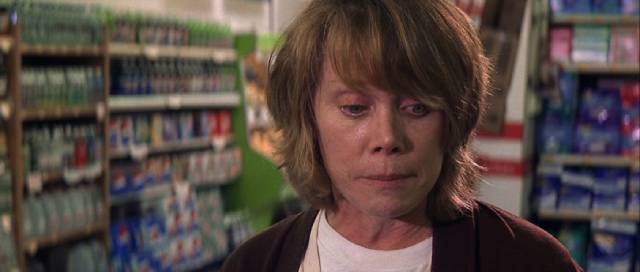
What The Straight Story gives us is a clear look at the ground from which everything else has risen; the opening, with its glimpses of an idealized rural landscape, echoes the small town imagery which opens Blue Velvet (1986), even to the point of paralleling the stroke/bee sting which fells Jeffrey’s father with Alvin Straight collapsing on the kitchen floor. But where the visual cliches of those opening shots in Blue Velvet are so heightened that their potential sentimentality becomes unsettling, the wheat fields and small town streets of The Straight Story are presented at face value, their ordinariness hiding nothing. Here we have a gentler hint of the shadows which press around the edges of a largely sunny, peaceful community. In Blue Velvet, this darkness quickly overwhelms everyday reality, while in The Straight Story Alvin has simply been given a reminder of what it means to be growing old; there’s no mystery here, just an awareness of inevitable mortality.
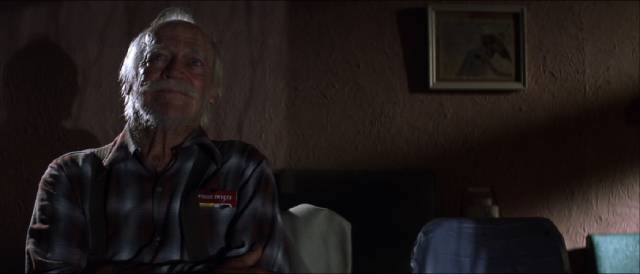
Throughout the film, there are touches of absurdity, hints of the surreal, but they all occur within a context of the everyday – reminding us that all that weirdness in the other films derives from an exaggeration of what Lynch finds already existing in the world. In telling Alvin’s story, Lynch simply keeps these touches in balance with the ordinary. In effect, the real experience of the real Alvin Straight – an old man driving a lawn tractor hundreds of miles across the Great Plains to see, and reconcile with, his estranged brother – establishes a sense of absurdity inherent in the lives of ordinary people.
Along the way, Alvin encounters small hints of the natural surrealism which expands throughout the rest of Lynch’s work. A small town fire department sets fire to a house; a woman who commutes every day along a deserted rural highway keeps hitting deer which seem to come out of nowhere; a peloton of hundreds of cyclists flood past Alvin’s tractor on that same empty highway. And the old man takes it all as it comes, as the accumulation of random details which make up a life.
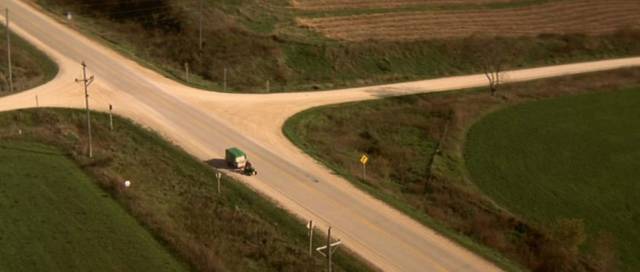
But if the film’s surface seems all sunlight (and rain) and the kindness of strangers, what isn’t immediately clear is that the darkness that rises to the surface of the other films is still present. However, here it’s carried inside the character of Alvin, a man with a burden of guilt and pain which his journey is, in part, an attempt to alleviate. His brother has had a stroke and Alvin finally wants to set aside a ten-year-old dispute which has kept them from speaking to each other. We don’t learn exactly what that dispute was about, and that’s part of the point – it no longer matters and perhaps never did – but we do get glimpses of Alvin’s past as he meets and talks to a variety of people along the way. He carries trauma from his long-ago experiences in World War Two; his life was upended by alcoholism; his family has been broken in multiple ways, with only his daughter Rose still a part of his life.
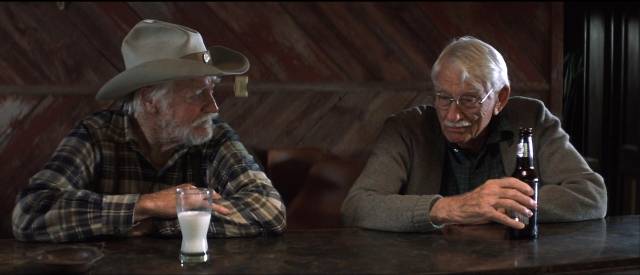
Although it’s not explicitly spelled out, his relationship with Rose also hints at deep pain. Mentally challenged, she once had four children, but the authorities took them away after one was injured in a fire and she was deemed incapable of caring for them. There are hints in Alvin’s telling of this story which suggest that he may have been responsible and still can’t fully come to terms with his guilt over the harm and pain he has caused Rose. He says only that the children had been left in “someone’s” care when the fire occurred, but the vagueness and his own history of alcoholism suggest that it was he who had been left in charge of the kids that night and he bears responsibility for the continuing pain Rose feels.
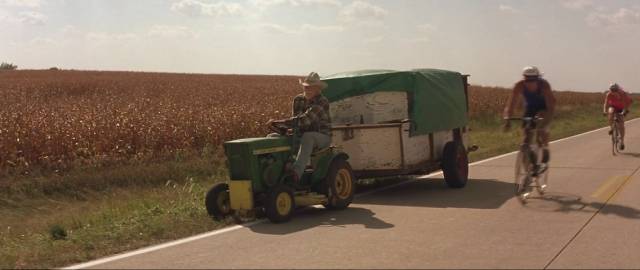
This possibility adds weight to the recurring imagery of fire throughout the film, both the campfires Alvin builds along the way and that old house being burned down by the fire department. Alvin carries the burden of a lifetime of actions and decisions which have shaped him in ways which have perhaps carried him far from what he might have hoped to be, and his long slow journey is as much a way of letting go of some of that existential detritus as it is about repairing the break with his brother. Lynch allows all of this to unfold at Alvin’s own pace, slowing down our perception so that we can see and absorb each small detail, each moment of Alvin’s private experience as well as each encounter with the people he meets along the way. One of my favourite shots in all of Lynch’s work conveys this beautifully: the camera, placed slightly behind Alvin on his tractor as he drives away, tilts slowly up to a sky bearing scattered clouds … it holds for a long beat, and then slowly tilts down again. In standard editing, this would have bridged a lapse in time, moving things along, but here we come back to Alvin only a few yards further along. This will be a long journey and the film will make no attempt to compress time and hurry Alvin towards his destination. It’s this particular moment and each subsequent moment which matters, to be taken on its own terms in its own time.
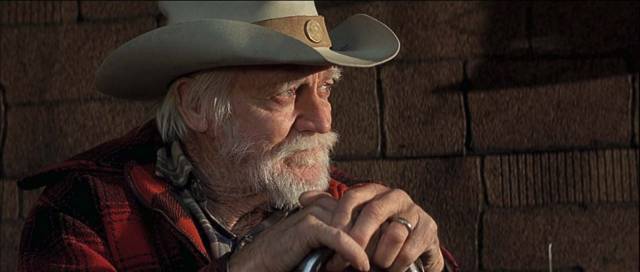
All of this is anchored by Richard Farnsworth’s wonderful performance as Alvin, the last in a six-decade career which began with an uncredited appearance in the Marx Brothers’ A Day at the Races (1937). He conveys multiple layers despite maintaining a calm surface at all times; as his journey unfolds, we become aware of sharp edges beneath the (sometimes prickly) charm. Despite the Disney connection, this is a completely unsentimental portrait of old age and all the more moving for that. In fact, the film is an obvious influence on the somewhat similar Lucky (2017), a connection cemented by the casting of Harry Dean Stanton as Alvin’s brother Lyle in the final scene as well as Lynch’s appearance as Lucky’s friend Howard.
For the most part the rest of the cast is relatively unknown other than Sissy Spacek as Rose and Everett McGill in a brief appearance as the farm equipment dealer who sells Alvin the lawn tractor. Adding to the film’s particular flavour are the cinematography of Freddie Francis, which evokes the ever-changing light and moods of the landscape, and the quietly evocative score by Angelo Badalamenti.
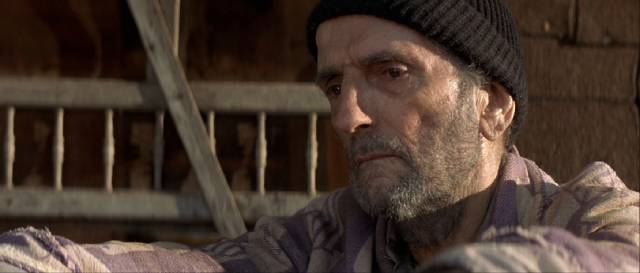
Lynch’s film, despite being partially funded by Disney, hasn’t had a North American upgrade since the original bare-bones DVD release in 2001. There were Blu-rays released in Japan in 2012 (with some interviews, including one with Lynch himself) and in France in 2018, but no sign of one here on the film’s home turf. The Imprint Blu-ray was mastered from a new 4K transfer with a nice representation of Francis’s imagery. There are multiple extras, including (surprisingly) a commentary (something for which Lynch has always shown a strong antipathy) by critic Peter Tonguette, which I haven’t listened to yet – plus several featurettes covering the music and aspects of the production, and a video essay by Ian Mantgani about the film’s themes which does an excellent job of pointing out how The Straight Story fits in with Lynch’s other work rather than standing outside as an anomaly.
*
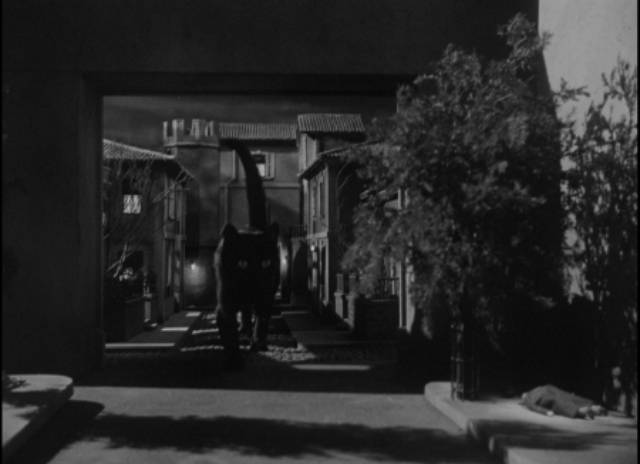
The Catman of Paris (Lesley Selander, 1946)
I’ve been pleased with the quality of the Impact disks I’ve watched, though one is technically weaker than the rest. That’s Lesley Selander’s The Catman of Paris (1946), a low-budget B-movie from Republic Studios, which despite a 4K transfer displays a lot of print damage. But that apart, it turns out to be an enjoyable movie, seemingly influenced by both the classic Universal horrors of the early ’30s and the then-recent, and more subtle, RKO movies produced by Val Lewton. Eschewing the suggestiveness of Lewton and Jacques Tourneur, Sherman L. Lowe’s script blends an ancient cat-people curse with the overt transformations of Stuart Walker’s Werewolf of London (1935) and George Waggner’s The Wolf Man (1941).
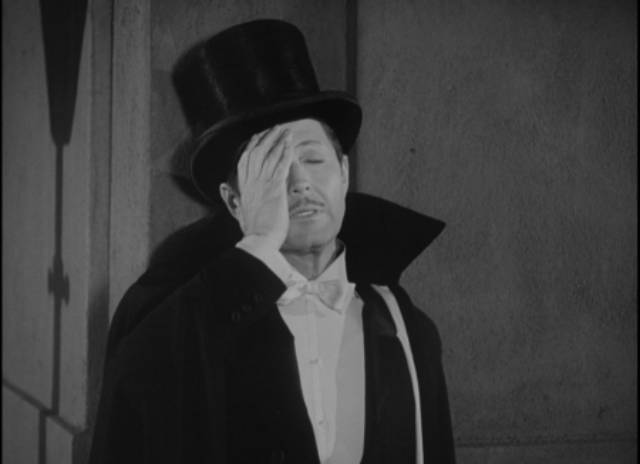
A series of savage murders in Paris baffle the police while clues point towards author-adventurer Charles Regnier (Carl Esmond), whose recent best-selling book about a controversial trial has embarrassed the government (echoes of Emile Zola and J’Accuse, his scathing 1898 newspaper article about the Dreyfus case). Regnier, engaged to Marguerite Duval (Adele Mara), falls for his publisher’s daughter Marie Audet (Lenore Aubert), which will inevitably cause a scandal. Even more problematic are frequent headaches leading to blackouts which coincide with the murders. Regnier himself begins to think he must be the killer, even though he has no memory of events.
Adding to the overt supernatural element – the killer acts while literally transformed into an animal – Lowe’s script throws in an additional element of mind control, with Regnier’s blackouts triggered by the actual killer to cover his own tracks. All is resolved in the final moments, with the police discovering the culprit in time to allow Regnier and Marie to pursue their romance.
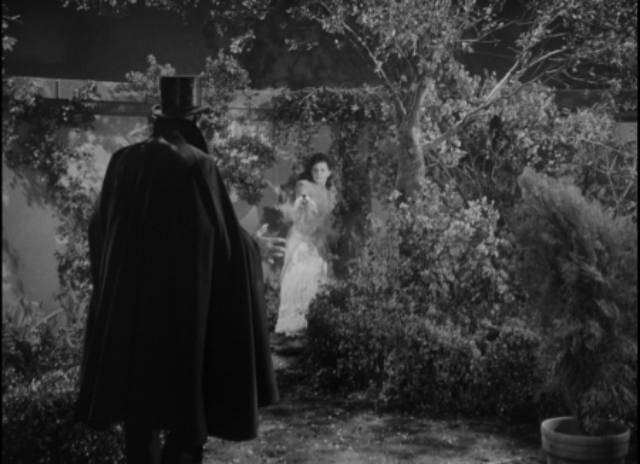
Although Republic was a minor studio, specializing in B-movies and serials, it had ambitions and financed films as diverse as John Ford’s The Quiet Man (1952) and Orson Welles’ Macbeth (1948). Selander’s little movie isn’t in their league, but it is atmospheric and well-paced, with occasional imaginative visual touches – a shot of a miniature street down which a cat approaches the camera is quite striking, so much so that it’s used under the opening titles as well as later in the scene to which it belongs, when one of the detectives on the case produces the miniature replica to illustrate a murder scene. Like the best B-movies, The Catman of Paris displays the pleasing qualities of brevity and a brisk pace, with a cast who treat the material with respect. Esmond might be a bit dull as the protagonist, but Aubert and Mara do well as the two women in Regnier’s life, Douglass Dumbrille is fine as his friend Henry Borchard, and Gerald Mohr and Fritz Field provide nice character work as the two policemen on the killer’s trail.
Kim Newman and Stephen Jones provide a chatty commentary and there’s a visual essay from Kat Ellinger about the film’s treatment of masculinity. There’s also a feature-length documentary from 1991 covering the history of Republic Studios.
*
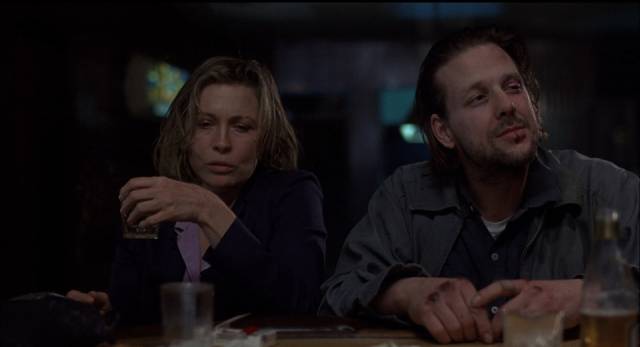
Barfly (Barbet Schroeder, 1987)
I disliked Barbet Schroeder’s Barfly when I saw it just once in 1987, and having now watched it again, I remain ambivalent. I didn’t know anything about Charles Bukowski back then, and I only know a little more now – I haven’t read any of his work – so my response then and now is specifically to the movie. On that first viewing I was repelled by what seemed a wallowing in degradation – I can recall commenting that you could almost smell the stench coming off the screen, the piss and vomit and sour sweat. This was not a place I wanted to be and these weren’t people I wanted to be around. I was puzzled that reviewers referred to the film as a comedy.
And yet, it has a positive reputation and major critics considered it one of the best films of its year. Maybe, all these years later, it was time for another look and perhaps a reassessment. Barbet Schroeder is an interesting filmmaker – though I find his early work (More [1969], La vallée [1972], General Idi Amin Dada [1974], Maîtresse [1976], Koko, a Talking Gorilla [1978]) more interesting than what he’s done in the past four decades – and the cast is excellent … so I was drawn to Imprint’s two-disk set.
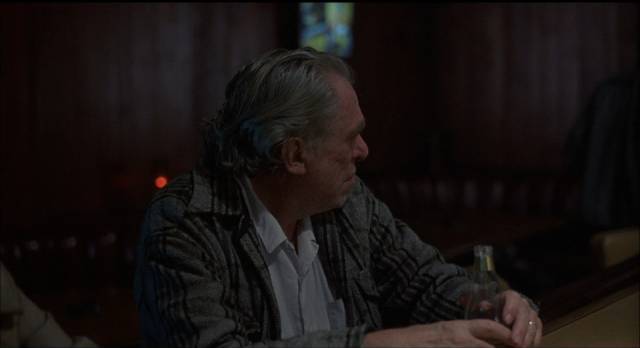
There is much to admire in the film, starting with Robby Mueller’s cinematography which manages to give squalor a paradoxical allure. Then there are the performances, with Mickey Rourke making Bukowski stand-in Henry Chinaski a career high-point, while Faye Dunaway eschews her more mannered tendencies to turn her Wanda Wilcox into a moving portrait of someone who has given up and retreated from the difficulty of living. Alice Krige brings her usual ethereal appeal to a rather thankless role as literary editor Tully Sorenson, a privileged woman indulging in a bit of squalor tourism, while the rest of the cast is filled out with a colourful collection of character actors – notably, Jack Nance as the detective who tracks Henry down for Tully; J.C. Quinn as bartender Jim, who is indulgently sympathetic to Henry; Frank Stallone as Eddie, the unsympathetic bartender who despises Henry for not conforming to his role as a hopeless drunk – he can’t stand that Henry embraces his life cheerfully and, even worse, is smart and articulate about who he is.
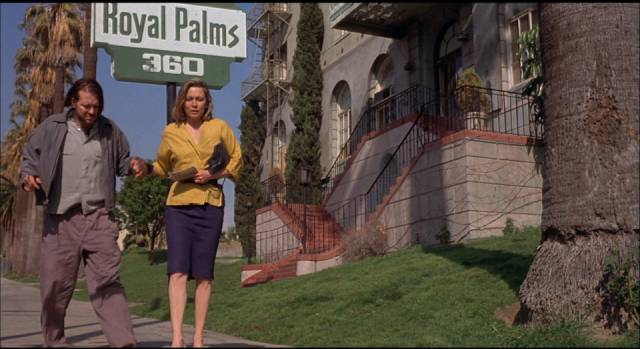
We first discover Henry and Eddie in the alley behind the bar beating the crap out of each other, surrounded by the other down-and-out patrons who are equally irritated by Henry’s attitude. This is the first of several such fights, which signal the mixture of self-confidence and self-destructiveness which lies behind both Henry’s alcoholism and his creativity – because like Bukowski he’s a skid row laureate, a sharp observer of his milieu and his own complicated feelings about life and the world he inhabits.
Taking place over several days, Barfly has little in the way of narrative – Henry meets Wanda one evening at the bar, they go back to her place, he moves in; Tully shows up not simply to give Henry a cheque for a story she wants to publish, but also to “save” him so that she can personally nurture his talent. Neither Henry nor Wanda are “faithful”, and each resents the other’s sexual indulgence with other people – Henry with Tully, Wanda with Eddie. Eventually Wanda and Tully get into a fight in the bar and Tully retreats in defeat, what her world has to offer no match for Henry’s love of alcohol and life in the lower social depths. In the end, Henry and Eddie head out to the alley for yet another fight, followed by the usual assortment of patrons, and the camera slowly retreats from the bar into the street, withdrawing from its brief glimpse of these people’s lives.
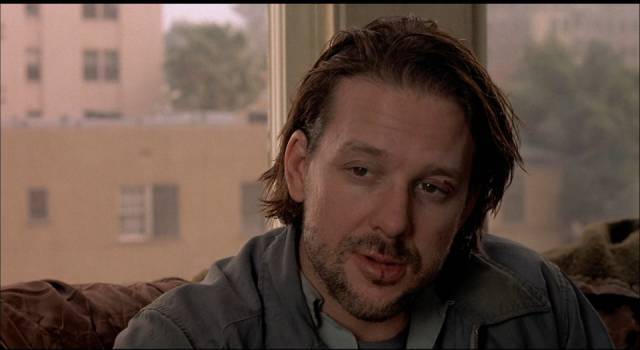
But what do we get from that glimpse? Barfly seems to be a romanticized self-portrait drafted by Bukowski to justify his self-destructive, antisocial choices. There’s exuberant humour in Henry as written, and more importantly as played by Rourke. Henry makes it seem that this life he’s living is not only an act of defiance against social dictates, but is the essential source for his art; that is, the idea of giving it up (as Tully urges) is absurd because giving it up would erase who he is. While this may be somewhat refreshing as an antidote to Hollywood’s typical moralizing about alcoholism (and addiction in general), it’s not an attitude which could be applied more generally (as anyone who has had any close experience with a true alcoholic knows). It’s very specific to Bukowski, who has enough self-awareness and literary ability to transform his experience into this idealized representation. (In the brief archival making-of included on the disk he claims to be suicidal, with alcohol being the most prolonged method available to kill himself.)
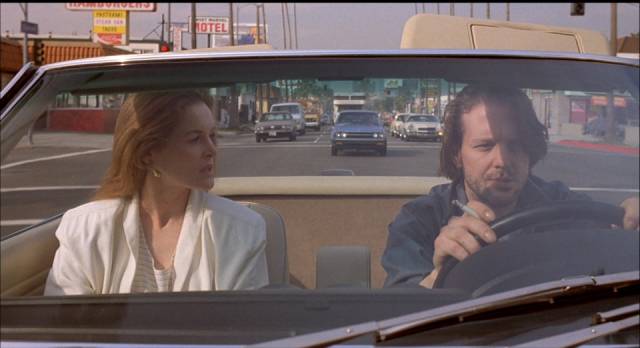
And so, watching Barfly again, I still feel a degree of repulsion, sensing a kind of disingenuous self-justification, but can’t deny the film’s many pleasures as film. Schroeder’s direction, Bukowski’s dialogue, and the fascinating performances give the material an exhilarating quality which creates a strange, and surprisingly engaging, tension with the sordid details of the lives it depicts.
Perhaps the oddest thing about the movie is that it was produced by Cannon Films, a company best-known for its exploitation and action movies which occasionally took a stab at respectability by backing projects by people like John Cassavetes (Love Streams, 1984), Andrei Konchalovsky (Maria’s Lovers, Runaway Train, both 1985), Franco Zeffirelli (Otello, 1986) and Jean-Luc Godard (King Lear, 1987). Even more surprising, Barfly was made by Cannon in collaboration with Francis Ford Coppola’s American Zoetrope, a company with completely different ambitions, with Coppola associates Tom Luddy and Fred Roos serving as producers. But despite this background, Barfly hasn’t had a North American release since a Warner Home Video DVD in 2002 (source of a Schroeder commentary and the making-of featurette included on the Blu-ray); there was a Koch Media Blu-ray released in 2011, but this Australian edition is the most elaborate release yet.
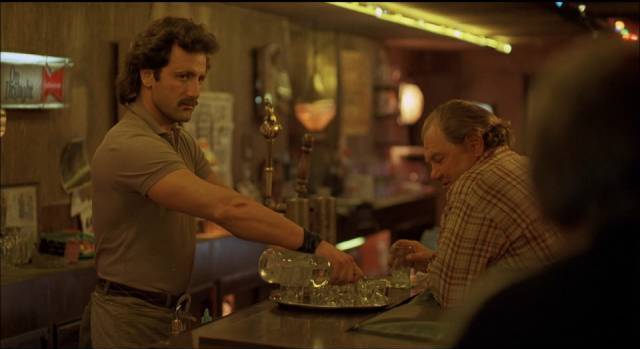
The Imprint disk includes two commentaries – the archival one with Schroeder and a new one with historians and preservationists Kim Cooper and Richard Schave – plus several new interviews with cast and crew members in addition to the archival making-of featurette. The second disk, which seems a bit daunting, is a series of interviews Schroeder conducted with Bukowski during the long period during which the filmmaker was trying to get backing for Barfly. These total four hours, so it’ll take a bit of a commitment to dive in.
*
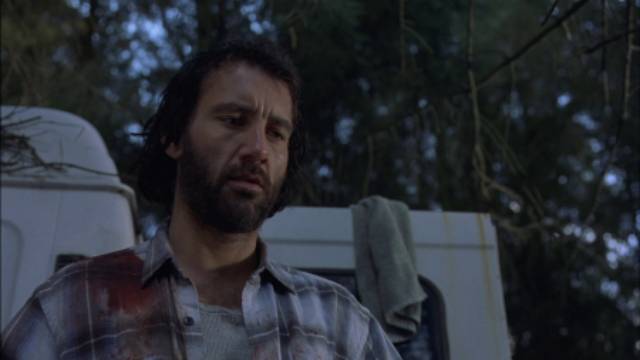
I’ll Sleep When I’m Dead (Mike Hodges, 2002)
After recent 4K restorations of Mike Hodges’ Get Carter (1971) and Croupier (1998), I wanted to take another look at his final feature, I’ll Sleep When I’m Dead (2002), which forms a kind of career book-end reflecting and to some degree commenting on his classic debut, in which a gangster returns home to find out why his brother has died and ends up wreaking havoc among the criminals he has been working for. In Get Carter, the protagonist is a vicious, cold-blooded killer; in I’ll Sleep, he’s a man tormented by his own history of violence, who has tried to escape his past and remake himself – a desire doomed to fail because what he wants to escape from is who he is.
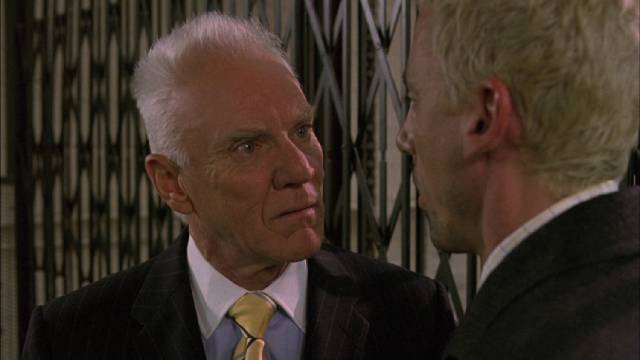
This final feature lies in the long shadow of Carter, but also in the shorter shadow of Croupier – the former because of the similar plot, the latter because of the casting of Clive Owen. Owen is mesmerizing as the still, observant centre of Croupier, but that inwardness seems problematic in I’ll Sleep, working against the demands of the story – Will Graham has to return to London, investigate what led to the suicide of his brother Davey (Jonathan Rhys Meyers), and exact revenge on those responsible, but Owen plays him as someone reluctant to act, trying to suppress the tendency to violence in himself. This contrasts sharply with Carter’s relentless mission which smashes through every obstacle on its way to a bleak resolution. It points to the inherent problem film has when trying to show interior states rather than physical action.
But perhaps the fault lies with me – Get Carter is a classic gangster film, using decisive action to define masculinity through violence; while this can be seen as regressive, it’s undeniably exhilarating to watch. I’ll Sleep When I’m Dead, on the other hand, sets out to interrogate the concept of masculinity itself and its ties to violence. Carter is a taut exercise in storytelling, but Trevor Preston’s script for I’ll Sleep seems more like a story told to illustrate a thesis.
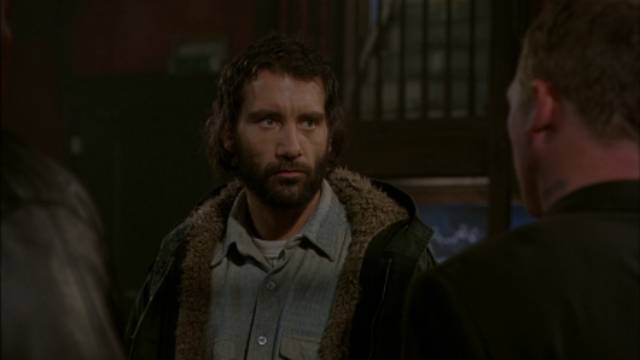
In Get Carter, Carter’s mission and his actions are deeply embedded in the criminal world he inhabits, but in I’ll Sleep, the world Will has tried to leave merely forms an underlying ambience. The event which triggers Will’s return is almost random, a signifier of the toxic masculinity Will has tried to escape. Davey is young, somewhat careless; he likes to party and finances his life with casual drug deals – but not enough to raise flags for the gangs running things in London. We don’t know why he’s been targeted by Boad (Malcolm McDowell), a wealthy car dealer with a family and a big suburban home. But Boad resents his youth, his carefree style, his self-confidence. And one night, Boad follows Davey and in a dark alley, his men grab him, drag him to a secluded spot and hold him down so Boad can rape him.
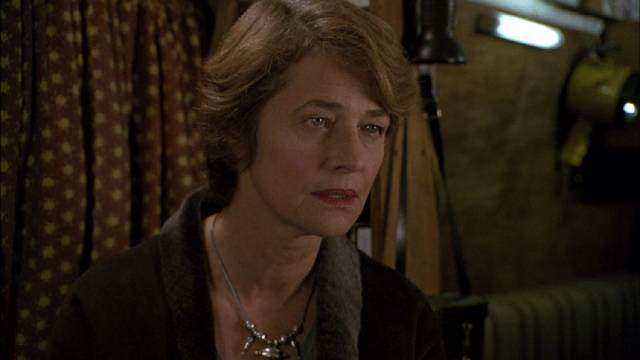
There’s nothing sexual in this, it’s a matter of pure dominance, of destroying Davey through unbearable humiliation; the choice of Davey as victim is almost impersonal – he could be any younger, more attractive man, a reminder of everything Boad is not. Although Davey’s death is obviously suicide, when Will returns to the city he needs to know why; not only is suicide so out of character, Will feels a weight of guilt for having left his brother to fend for himself. As he’s been gone a long time, he no longer fits into the milieu – former gang members hope to revive their activities, but he’s not interested; former lover Helen (Charlotte Rampling) has no desire to reconnect – and so he follows his lonely path to track down Boad and exact revenge. Having succeeded, he disappears again, leaving Helen in the hands of a thug who’s waiting for him to return. It’s all oddly anticlimactic. The bleak, cynical and inevitable ending of Get Carter has been replaced with something more open-ended; perhaps because Will struggles against his own dark nature he’s given another chance … but to do what, we don’t know.
As with all of Hodges’ films, the level of craft is impeccable and the performances excellent, but Trevor Preston’s script lacks some essential spark; it seems like an idea for a movie rather than something fully realized. The disk is taken from an older master, but looks fine. There are a couple of very brief deleted scenes, a half-hour archival documentary and a commentary from Hodges and Preston. It’s perhaps understandable that the film hasn’t had much of a home-video profile – it’s a much weaker movie than Get Carter and Croupier – but it’s nonetheless gratifying to have yet another Hodges film available in a decent edition.
*
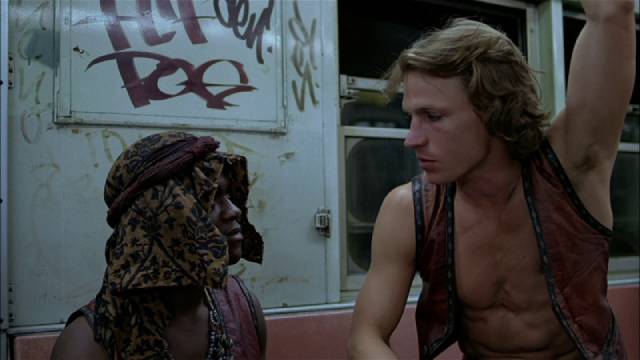
The Warriors (Walter Hill, 1979)
Filmmakers altering their work after initial release is a long-debated subject. I have no quarrel with the practice if they don’t use it to erase the original movie – George Lucas has long been the poster child for this, updating all his early work with digital technology and suppressing the originals which, let’s not forget, were what made him rich and famous in the first place. Particularly with very popular movies, this raises the question of who does the film “belong” to? Once a movie is released into the world its audience takes possession of it, so when a filmmaker comes along later and says they want to make changes so it conforms to their “original vision”, that’s all well and good and can even be interesting for the fans. But to replace the original and take away what has been so deeply ingrained into the public consciousness is arrogant and suggests a degree of contempt for the audience who have made the movie a success.
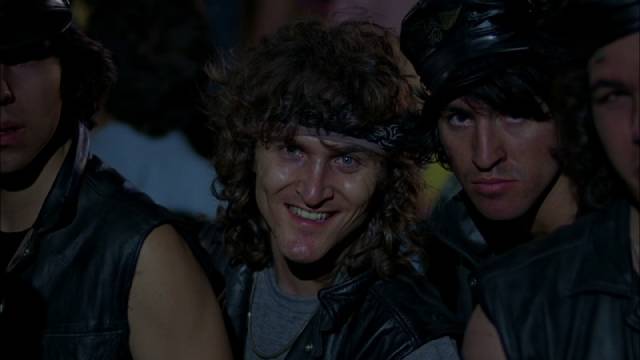
Walter Hill’s The Warriors (1979) was a controversial success during its original theatrical release. It was feared that its story of New York gangs clashing over a single hot, violent night would incite riots in theatres. In retrospect, this looks like just another absurd moral panic. The film is so stylized, steeped in mythic overtones, that it would be a real stretch to see it as some kind of realistic depiction of an actual situation – it’s as much a fantasy as Star Wars, with heroes and villains and the protagonists’ struggle to maintain a sense of integrity in the face of chaos.
The movie followed the usual home video course – VHS, laserdisc, and then an early DVD release in 2000. I had a copy of the latter, but then made the mistake of trading it in when Hill announced his “ultimate director’s cut”. Guess I wasn’t as wise back then. The new edition released in 2005, despite being Hill’s “original vision”, wrecked The Warriors. The film is a stripped down, fast-paced story which skilfully balances action and character. Although obviously suggested by some of the characters’ names – Ajax, Cleon, Cyrus – you don’t need to know that it (and the source novel by Sol Yurick) was based on Xenophon’s Anabasis, the story of a fourth century B.C. Greek army trapped in enemy territory having to fight and negotiate its way to the sea, to appreciate the film.
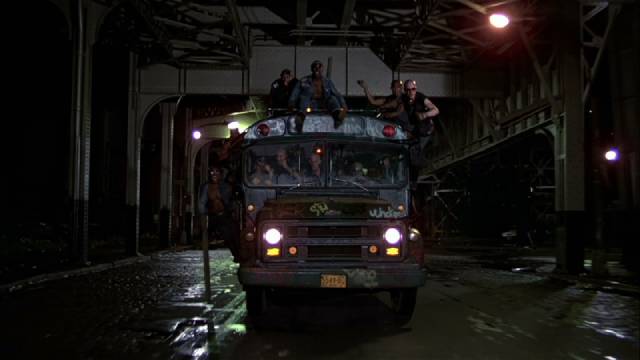
More pertinent was Hill’s turning the tropes of juvenile delinquent/gang movies on their head. His concerns aren’t sociological; this is an adventure film which happens to be set in what looks like contemporary New York. But the city is populated exclusively by numerous gangs, each presented as its own tribe with particular ceremonial garb and customs. Very rarely does anyone outside this gang culture appear (an occasional cop or civilian, the D.J. who provides running commentary and advice, perhaps inspired by Cleavon Little’s Super Soul in Richard C. Sarafian’s Vanishing Point [1971]). The action is set in motion by a call from Cyrus (Roger Hill), the charismatic leader of the Gramercy Riffs, for every gang to send nine unarmed delegates to Van Cortlandt Park to hear his proposal for an alliance among the gangs – working together, they can rule the city.
After a rousing speech, Cyrus is assassinated by Luther (David Patrick Kelly), an avatar of chaos. In the ensuing panic, Luther points to the Warriors, a gang from Coney Island, and shouts that he saw them fire the shots. Far from home, the Warriors must cross a now very hostile city, passing through the territory of many very distinctive gangs – the Turnbull ACs, the Baseball Furies, the Lizzies (naturally an all-girl gang who lure the Warriors into a trap with the promise of sex). There’s an uneasy encounter with the Orphans, a low-status gang who have to challenge the Warriors, but are amenable to a truce as they pass through Orphan territory … at least until Mercy (Deborah Van Valkenburgh) taunts the two leaders for their cowardice, forcing a fight.
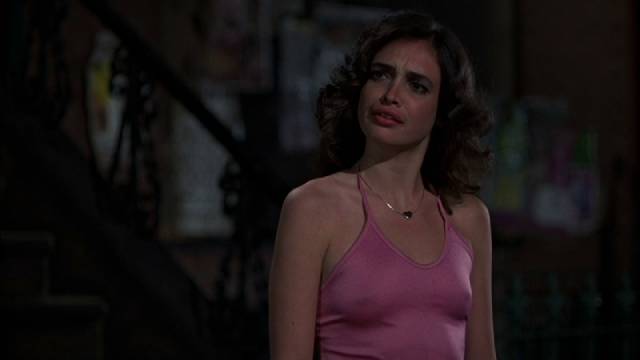
Bored, Mercy follows the Warriors and eventually joins them on their journey, forming a bond with leader Swan (Michael Beck). The Warriors eventually arrive at the shore on Coney Island for a final showdown with Luther and his gang as the Gramercy Riffs close in. Although not everyone made it home, Luther’s lies are exposed and the Warriors are seen to have saved their honour as the new day starts.
As in all of Hill’s best work, exposition is kept to a minimum, character is defined by action and the story takes place in a perpetual present – past and future don’t matter, just the now. The film is well-cast with (at the time) little known or unknown actors, which keeps the audience from bringing any preconceived notions to what might happen next. It was the first film for Kelly and Van Valkenburgh, launching their careers, and gave a boost to James Remar (as the hot-headed Ajax) and Michael Beck, who had only a few previous credits.
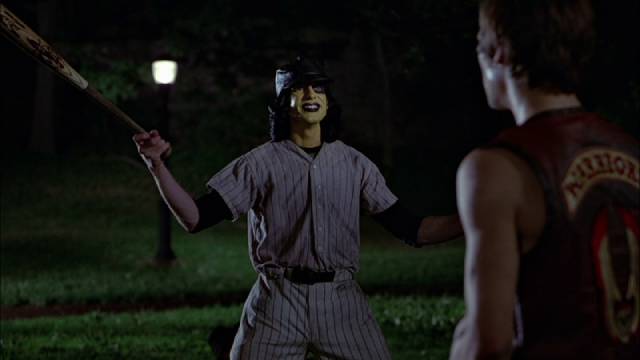
The nighttime cinematography of Andrew Laszlo gives an other-worldly sheen to the city, and Barry De Vorzon’s synth score, occasionally punctuated by upbeat songs, propels the action.
The Warriors was Walter Hill’s third feature and, while Hard Times (1975) and The Driver (1978) were both excellent, it was here that he seemed to perfect his approach. So why did he feel the need a quarter-century later to go back and “fix” it? The danger in this kind of tampering is that, while he might imagine he’s returning to his original conception, he’s actually bringing decades of subsequent experience to bear and trying to force the film into a different mould. Which is what he did.
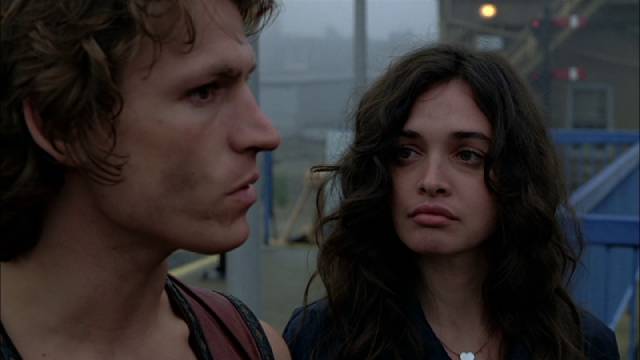
Apparently he had two main concerns. The first was that audiences wouldn’t catch the references to ancient Greece, so he added a text prologue to spell out the story of the Anabasis. While this seems a bit pedantic, his other change was far more detrimental: stung by the perception of many back in 1979 that he was glorifying real gang violence, he wanted to make sure that it would now be understood as a live-action comic. So he inserted comic book panels, complete with dialogue bubbles, between scenes, completely disrupting the flow of the action so the film keeps stopping and starting; even worse, this ruins some of the best reveals by signalling what we’re about to see.
As I’d prematurely gotten rid of my original DVD, I was stuck with this lame revision for almost two decades. But Imprint’s release includes both the “ultimate director’s cut” and the original theatrical version. I haven’t re-watched the former, but it was really nice to discover that the latter is just as good as I remember, with a decent if not stellar transfer. And the two-disk set is packed with extras, including new commentary tracks on each version, plus deleted scenes, interviews with cast and crew, a vintage four-part making-of, a featurette on the classical Greek influences, and a visual essay on the film.
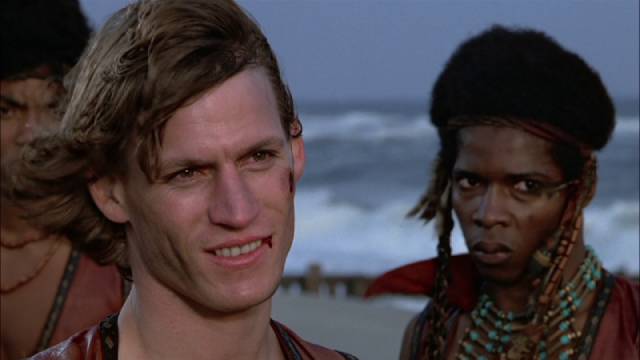
It’s the set I’ve been waiting for for a long time, and for some reason it hasn’t been released in North America (though the theatrical cut is apparently now available on some streaming services and was made available as a burn-on-demand disk a couple of years ago).
Based on the evidence of this and these other releases from Imprint, I’ll have to start doing more shopping in Australia!
Comments